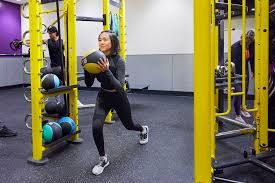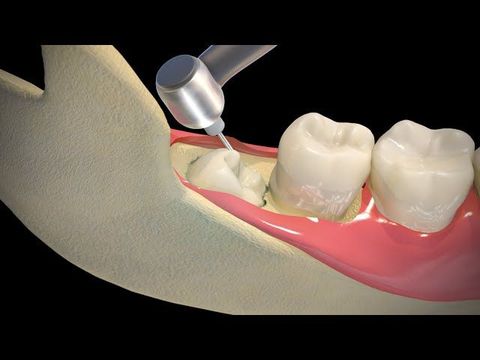Functional Fitness Guide: Explore Basics, Tips & Practical Insights
Functional fitness refers to exercise methods that improve the body’s ability to perform everyday movements. Instead of focusing only on isolated muscle training, it emphasizes natural patterns like bending, lifting, pushing, pulling, and rotating. This approach developed as people began looking for training methods that support mobility, balance, posture, and long-term physical well-being.
As daily routines became more sedentary and technology reduced physical effort, functional movement patterns weakened for many individuals. This created a need for fitness approaches that rebuild real-world strength and support healthy motion. Functional fitness grew in popularity as people sought practical ways to enhance flexibility, stability, and endurance for daily tasks whether climbing stairs, carrying items, or maintaining better posture.
Importance
Functional fitness matters today because it supports overall physical resilience. It benefits a wide range of people from beginners to active adults, seniors, and athletes by improving how the body operates in daily situations.
It helps address several key challenges:
-
Reduced mobility caused by long sitting hours
-
Weak core muscles and poor posture
-
Higher chances of strain or injury during routine activities
-
Limited flexibility that affects walking, bending, or lifting
-
Difficulty maintaining balance and stability with age
For older adults, functional exercises assist in improving balance and lowering fall risk. For working professionals, they help counter stiffness from desk work. For fitness enthusiasts, they enhance performance through integrated movement patterns, not isolated strength building. The focus is on sustainable movement quality rather than intensity alone.
Recent Updates
The past year brought several developments highlighting the growing importance of functional fitness.
-
In 2024, health reports emphasized that more individuals are seeking mobility-focused workouts over heavy-load training. This shift reflects a preference for long-term wellness and injury prevention.
-
The rise of hybrid work environments in 2024–2025 increased interest in movement routines that relieve stiffness from laptop-based work.
-
Digital fitness platforms added functional training modules between 2023 and 2025, indicating demand for routines requiring minimal equipment.
-
Various sports bodies and wellness groups promoted movement screening tools in 2024, helping individuals assess posture and mobility limits before starting new routines.
These updates show that functional fitness continues evolving with better guidance, more accessible formats, and evidence-backed techniques.
Laws or Policies
Policies related to fitness vary by region, and while functional fitness itself is not regulated as a practice, it is influenced by broader wellness and public health guidelines.
-
Many countries follow physical activity recommendations provided by national health departments, often aligned with the World Health Organization (WHO) guidelines that encourage strength and mobility exercises for adults.
-
Public health initiatives launched across multiple regions in 2024 encouraged active living, workplace wellness programs, and movement-friendly environments.
-
Safety regulations around gyms and training centers require instructors to follow approved exercise standards, ensuring that functional training programs promote correct movement patterns.
-
Government wellness campaigns often highlight daily activity, flexibility work, and balance routines all core components of functional fitness.
While these rules do not focus solely on functional workouts, they shape the overall environment in which individuals engage with fitness programs.
Tools and Resources
Several tools help individuals practice functional fitness effectively. These support strength, mobility, flexibility, and movement analysis.
Useful Equipment
-
Resistance bands
-
Kettlebells
-
Stability balls
-
Foam rollers
-
Mobility sticks
-
Balance boards
Helpful Apps and Digital Tools
-
MyFitnessPal – tracks movement habits and nutritional data
-
StrongLifts Tracker – useful for monitoring progress in strength-oriented routines
-
Mobility-specific apps – for guided warm-ups and flexibility drills
-
Video-based workout platforms – offering functional movement sessions
-
Movement analysis tools – digital systems that assess posture and motor patterns
Simple Movement Template
A weekly structure may include:
| Day | Focus Area | Example Activities |
|---|---|---|
| Monday | Mobility | Dynamic stretches, joint rotations |
| Tuesday | Strength | Squats, lunges, kettlebell lifts |
| Wednesday | Balance | Single-leg drills, stability ball work |
| Thursday | Core Training | Planks, rotational exercises |
| Friday | Integrated Movement | Full-body movement circuits |
| Weekend | Light Activity | Walking, stretching |
This structure supports overall functional strength without overwhelming the routine.
FAQs
1. What makes functional fitness different from traditional exercise?
Traditional training often isolates muscles, while functional fitness trains movement patterns used in daily activities. It emphasizes coordination, balance, and integrated muscle engagement.
2. Can beginners start functional fitness without equipment?
Yes. Many functional movements such as bodyweight squats, hinges, lunges, or planks require no equipment. Beginners can start slowly and progress as needed.
3. Is functional fitness suitable for older adults?
Functional exercises benefit older adults by improving balance, mobility, and flexibility. They help maintain movement confidence and make daily activities easier.
4. How often should functional fitness be practiced?
Most guidelines recommend incorporating functional movements at least two to three times per week while allowing rest between sessions. Frequency can be adjusted based on individual comfort.
5. Does functional fitness help with posture improvement?
Yes. Since functional routines focus on core strength, alignment, and controlled movement, they support improved posture during sitting, standing, and walking.
Conclusion
Functional fitness offers a practical and accessible way to improve overall movement quality. It helps individuals strengthen muscles used in everyday life, develop balance, and build flexibility. With rising interest in long-term wellness, functional training has become a valuable approach for people across age groups.
The growing shift toward mobility-based routines, digital fitness tools, and awareness of healthy movement patterns continues to shape how individuals integrate functional fitness into their lifestyle. Whether practiced at home or in structured programs, functional training supports daily movement, physical resilience, and overall well-being.







